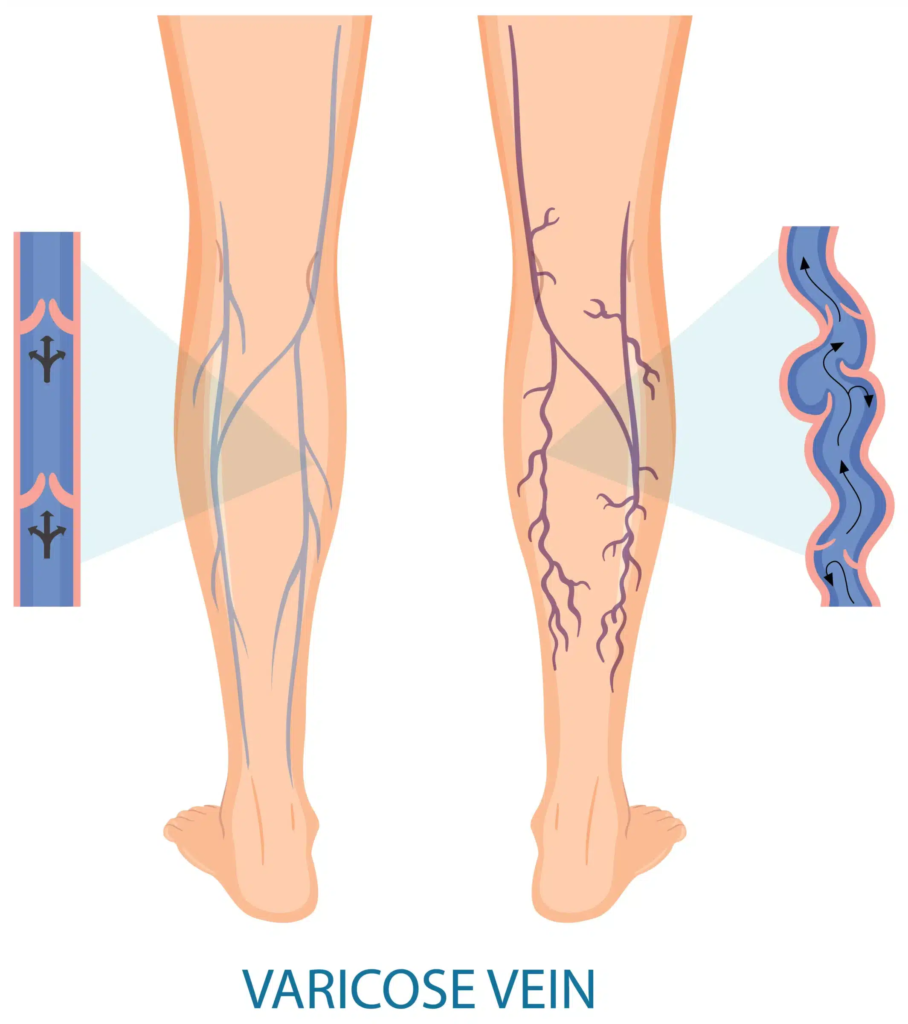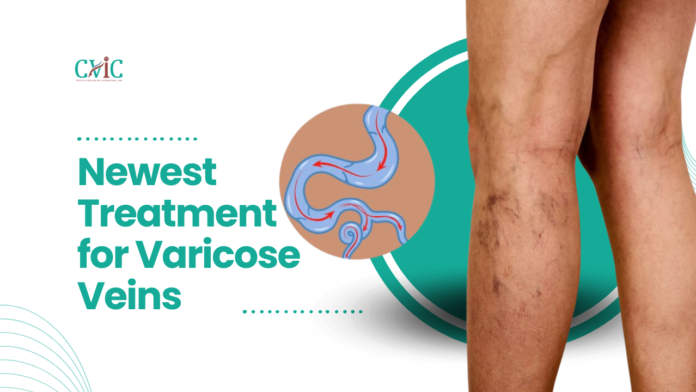Varicose veins, those swollen, twisted veins often visible under the skin, can be more than just a cosmetic issue—they may also lead to discomfort or serious health complications. Fortunately, the field of vascular medicine has evolved rapidly, offering newer, more effective treatments that provide relief with minimal discomfort. Whether you suffer from varicose veins or are looking for the best treatment options for someone you care about, understanding these cutting-edge therapies is crucial.
Let’s explore the most innovative treatments for varicose veins that are changing the way patients approach this common condition.
Understanding Varicose Veins and Their Causes
Varicose veins occur when the veins, primarily in the legs, become enlarged and overfilled with blood due to faulty valves. These valves typically keep blood flowing in one direction—back to the heart. When they fail to work properly, blood pools in the veins, causing them to bulge and twist. This condition is not just aesthetic; it can lead to symptoms like pain, heaviness, swelling, and even skin ulcers if left untreated.
Some common causes include:
- Age: As people age, vein elasticity decreases, causing the valves to weaken.
- Genetics: Family history plays a significant role.
- Gender: Women are more prone due to hormonal changes (pregnancy, menopause).
- Lifestyle: Standing or sitting for long periods, obesity, and lack of exercise increase risk.
- Pregnancy: The increased blood volume and pressure during pregnancy can trigger varicose veins.
While varicose veins are quite common, with nearly 23% of adults in the U.S. affected, the good news is that newer treatments are more effective, less invasive, and have a faster recovery time than traditional surgery.
Also Read: What is the Most Effective Treatment for Gangrene?

Newest Treatment Options for Varicose Veins
The newest treatment for varicose veins focuses on minimally invasive techniques designed to close or remove the affected veins without lengthy recovery periods or significant discomfort. Let’s break down some of the most advanced methods.
1. Endovenous Laser Ablation (EVLA)
Endovenous laser ablation (EVLA) is one of the most popular treatments available for varicose veins. It uses laser energy to heat and close the affected vein. The procedure is performed under local anesthesia, and patients can typically return to normal activities within 24 hours.
How it works:
- A catheter is inserted into the affected vein, and laser fiber is used to deliver heat that seals the vein shut.
- The body naturally reroutes the blood flow through healthier veins.
- Over time, the sealed vein shrinks and fades.
Benefits:
- Minimally invasive and effective.
- High success rates with low recurrence of varicose veins.
- No need for a hospital stay—performed on an outpatient basis.
Also Read: 10 Essential Tips for Managing Diabetic Foot: Prevention and Care for Healthy Feet

2. Radiofrequency Ablation (RFA)
Radiofrequency ablation (RFA) is another cutting-edge treatment, similar to EVLA, but uses radiofrequency energy instead of laser to close off varicose veins. This method is also highly effective, particularly for larger veins.
How it works:
- A small catheter is inserted into the vein, and radiofrequency energy heats the vein walls, causing them to collapse.
- Once closed, the blood naturally redirects to healthier veins.
Benefits:
- Offers minimal discomfort during and after the procedure.
- Requires only local anesthesia and can be done in under an hour.
- Quicker recovery compared to traditional vein-stripping surgery.
Also Read: Can Gangrene Recur After Treatment? Understanding Risks and Prevention

3. VenaSeal™ (Medical Adhesive Closure)
VenaSeal™ is one of the newest, innovative treatments available for varicose veins. It’s a non-thermal treatment that uses a medical adhesive to close off the affected vein. This approach eliminates the need for heat, tumescence anesthesia, and multiple needle sticks, making it an attractive option for many patients.
How it works:
- A catheter is used to deliver a medical-grade adhesive to the vein.
- The adhesive seals the vein shut, and the blood is rerouted to healthy veins.
Benefits:
- No need for compression stockings post-procedure, which are usually required for other treatments.
- Less discomfort and minimal bruising.
- Ideal for patients who may not be suitable candidates for thermal ablation treatments.
4. Sclerotherapy (Foam and Liquid Sclerotherapy)
Sclerotherapy is a well-established treatment that has been refined in recent years to improve its effectiveness. Foam sclerotherapy, in particular, has gained attention for treating larger varicose veins.
How it works:
- A solution (either foam or liquid) is injected into the affected vein, causing it to collapse and eventually be absorbed by the body.
- The foam version is particularly effective for larger veins as it can cover more surface area inside the vein.
Benefits:
- Quick and virtually painless.
- Ideal for treating spider veins and smaller varicose veins.
- Minimal downtime, with many patients returning to their daily routines almost immediately.
5. Clarivein® (Mechanical Occlusion Chemically Assisted)
Clarivein® is another advanced non-thermal treatment that combines two mechanisms: mechanical damage to the vein’s inner lining and chemical sclerotherapy. It’s a great option for patients looking for a minimally invasive, effective treatment without the need for anesthesia.
How it works:
- A rotating catheter damages the inside of the vein while simultaneously delivering a sclerosing agent to collapse the vein.
- No heat or anesthesia required, which reduces discomfort.
Benefits:
- Minimally invasive with minimal discomfort.
- No need for thermal energy, making it suitable for more sensitive patients.
- Fast procedure with little downtime.
Recovery from New Treatments for Varicose Veins
One of the biggest advantages of these newer treatments is the quick recovery time. Most patients can walk immediately after the procedure and resume their normal activities within 24 hours. While some treatments may require the use of compression stockings for a short period, others, like VenaSeal™, eliminate this need altogether.
Additionally, these procedures result in minimal scarring or bruising, offering both aesthetic and medical benefits.
Benefits of Treating Varicose Veins Early
While varicose veins might seem like just a cosmetic issue, they can lead to more serious health concerns if left untreated, including:
- Skin ulcers and sores.
- Blood clots or deep vein thrombosis (DVT).
- Chronic leg swelling.
- Persistent pain or discomfort.
Early treatment not only prevents these complications but also improves quality of life, as patients often report significant relief from symptoms like leg heaviness, pain, and itching.
FAQs
Is EVLA better than traditional surgery?
Yes, EVLA is less invasive, offers faster recovery, and has fewer complications compared to traditional surgery, making it the preferred choice for most patients.
How long does the VenaSeal procedure take?
The VenaSeal procedure typically takes 30 to 45 minutes and is performed in an outpatient setting.
Can varicose veins return after treatment?
While new varicose veins can develop over time, most of the newer treatments, such as EVLA and RFA, have a high success rate with low recurrence.
Is sclerotherapy painful?
Most patients report minimal discomfort during sclerotherapy, and the procedure is often well-tolerated.
Will my insurance cover varicose vein treatments?
Many insurance plans cover varicose vein treatments, particularly if the procedure is deemed medically necessary. Always check with your provider beforehand.
How soon can I exercise after varicose vein treatment?
Patients can typically resume light exercise within a few days of treatment, but it’s best to follow your doctor’s specific recommendations.
Conclusion
With advancements in vascular health, the newest treatments for varicose veins provide patients with more options that are less invasive, more effective, and offer quicker recovery times. Whether it’s the innovative VenaSeal™ system or time-tested EVLA, patients now have access to therapies that not only address the aesthetic concerns of varicose veins but also relieve discomfort and prevent serious complications.
If you’re considering treatment for varicose veins, consult a vascular specialist to determine the best course of action for your specific needs. These cutting-edge treatments are bringing relief to countless individuals, making varicose veins a thing of the past.




